Jim Wickwire
on his book "Addicted to Danger"
Click below for audio and transcripts
You need the
FREE RealPlayer
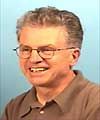
"To say that one is addicted to danger I think there's definite merit in that..."
[CLICK for AUDIO]
or
[TRANSCRIPT]
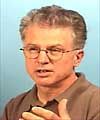
"I do think that having reached the summit was a critical element of my survival because there was this euphoria, this real adrenaline rush...."
[CLICK for AUDIO]
or
[TRANSCRIPT]
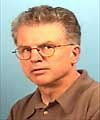
"Marty Hoey suddenly fell out of her waist harness when she was leaning back on the fixed rope right beside me..."
[CLICK for AUDIO]
or
[TRANSCRIPT]
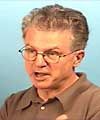
Timing was amazing because I had no idea that Krakauer's book was coming..."
[CLICK for AUDIO]
or
[TRANSCRIPT]
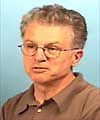
"I don't regret it... the life you've lead... you only get to do it once, you don't get to go back and have a second chance..."
[CLICK for AUDIO]
or
[TRANSCRIPT]
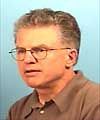
"I felt that if I'm going to do this [I'm] going to tell it like it was and not hold anything back..."
[CLICK for AUDIO]
or
[TRANSCRIPT]
© 1998 The Zone Network. All rights Reserved.

The Mountain Zone Interviews Jim Wickwire
 K2, Pakistan [click to zoom] (photo: Art Wolfe) |
Those who have followed Wickwire's climbs, and been aghast at the death and pain he has encountered in the mountains, will find the book loaded with climbing detail and thoughtful insight into the human dynamics of his expeditions to the highest mountains on earth.
"I even learned things about myself while writing this book," Wickwire recently told The Mountain Zone. "It struck me how many times I had committed to give up climbing, but never did. That's where the title came from. Clearly, I was addicted to something, and the lure of climbing drew me back to the mountains time and again despite demands and obligations of family and work. There was a psychological benefit to doing these climbs, at least for me, and I couldn't resist it."
| "I tried everything I could think of but I just could not get Chris out of that crevasse..." |
Wickwire is probably best known in climbing circles for his ascent in 1978 of K2, at 28,250 feet, the second highest mountain in the world, and the famous bivouac he endured just a few hundred feet below the summit.
"Climbing K2 was the fulfillment of a life long dream. I had been fascinated with the mountain ever since I was a teenager and first saw a photograph of it in the famous book, Abode of Snow. K2 had always had a more powerful allure for me than Everest.
| Streaming Video Jim Wickwire | |
 | |
| REAL MEDIA modem speed (28k) (56k) (T1) RealPlayer | |
| NetShow modem speed (28k) (56k) (T1) NetShow |
Wickwire's first K2 expedition, lead by Jim and Lou Whittaker, was one of the most rancorous and contentious in history. Galen Rowell wrote a book describing how the expedition broke down along the "haves," including the Whittakers and Wickwire, and the "have-nots," which was everybody else. The deeply divided 1975 team attempted a route that to this day remains unclimbed. The climbers never got close.
Three years later Wickwire and the Whittakers went again. This time Wickwire was successful. After a long climb from their high camp he and Lou Reichardt reached the summit together. They were the first Americans to reach the summit of K2. It was a stunning success, but Reichardt's oxygen had run out and so he was impatient to get down. He left immediately for their high camp. Wickwire, who had been dreaming about this moment for decades, decided to spend some time on the summit.
"I wanted to linger a moment, to savor the experience of attaining a life-long goal. Plus I wanted to change film and take some more pictures. So Lou and I thought nothing of splitting up, and I expected to follow shortly and be just a little behind."
 Denali viewed from Talkeetna, Alaska [click to zoom] (photo: Brian McCullough) |
"When I started down, the light was already beginning to fade. I thought it would be too dangerous to continue in the dark. I figured that with a bivouac sack, spending the night where I was would be the safest thing to do."
Wickwire felt good, confident and warm, when he first settled into his bivvy sack. But shortly thereafter his oxygen ran out (even on a reduced flow) and he became hypoxic and cold.
"When that happens your mental faculties plummet. I was also worried about hypothermia. To make matters worse, I had difficulty staying put as me and my bivvy sack together kept sliding off the mountain. I was worried about frostbite and pulmonary edema, but hypothermia was my biggest concern. An incident on Rainier had demonstrated how debilitating that could be.
"Fortunately, I had been through enough miserable bivouacs to know that the night would end. I also think that having reached the summit was a critical element in my survival, it gave me an adrenaline rush and great sense of satisfaction that saw me through the night. The hardest thing was trying to get moving in the morning. By then I was pretty far gone. What motivated me were thoughts of my wife and children."
Wickwire eventually made his way to high camp and safety, running into John Roskelley and Rick Ridgeway coming up for their own summit bid. Wickwire, who was cold, stiff and hypoxic, said he was climbing like the Tin Man, so Roskelley shouted out, "Wick, I'm going to send you to climbing school." At the top of the Bottleneck Couloir, Roskelley patted Wickwire on the head. "It was the first human touch after a long, brutal night, and it meant a lot."
|
"Me and my bivvy sack kept sliding off the mountain. In the morning... I was pretty far gone..." |
"My wife and kids looked at this shriveled up person and couldn't believe I was the same person," remembered Wickwire. "Some people view having to bivouac as something of a failure, but for us we were so committed to getting to the top that I was prepared to do that."
The close call was enough to make him resolve to give up climbing forever, but his resolution did not last. This is a continuing theme throughout Addicted to Danger: Each time there is a death in the mountains, or even a close call, Wickwire resolves to give up climbing and spend more time with his family, but each time the allure of the mountains proved too strong.
Soon Wickwire was not just back in the mountains, but he was on the highest one on earth. Wickwire admits the failure to reach the top of Everest in three attempts ('82, '84 and '93) by new routes on the north side still bothers him. But his frustration is mitigated by his reaching the summit of K2, generally considered the more difficult of the two peaks.
"I wanted to climb Everest, I think all climbers do, but it's true I never had the same motivation or ambition to reach the top of Everest that I had for K2."
| "When Marty Hoey fell, I think that just took the heart out of our Everest attempt..." |
As long and successful as it's been, Wickwire's climbing career has been haunted by tragedy. Over the course of decades of climbing, one can expect to encounter tragedy, but Wickwire has had more than his share.
In 1977, while making a first ascent in the Fairweather Range of Canada, two of his climbing companions fell during the descent. Wickwire watched, horrified, as Dusan Jagersky and Al Givler rocketed past him and fell to their deaths.
Then, in 1981, Wickwire and a young Mount Rainier guide named Chris Kerrebrock were climbing Mount McKinley when Kerrebrock fell into a crevasse. The force of the fall pulled a sled loaded with gear and Wickwire in after it. Wickwire, injured, was able to climb out, but Kerrebrock died slowly, wedged head-first into the crevasse. And finally, while making an attempt on Everest via the north side, Wickwire's teammate Marty Hoey fell to her death from the fixed ropes just a few feet in front of him when her harness came unfastened.
|
"You disassociate yourself from these tragic accidents... you say to
yourself 'I am not going to make that mistake... " |
"All these sad events occurred in a relatively short time frame," Wickwire remembers, "from '77 to '82. That's a lot of tragedy for five years. I would hear scuttlebutt of, 'don't go climbing with Wickwire cause you'll never come back.' That bothered me at the time because I consider myself a safe climber, and still do. But the loss of those friends takes an enormous toll.
"Dusan Jagersky was someone I considered to be my closest climbing friend. And even though I did not know Chris Kerrebrock well, but considered him an ideal climbing companion. Marty Hoey was someone I had gotten close to during several climbs, Aconcagua and Everest.
"What you do is disassociate yourself from these tragic accidents. You stand back and analyze what happened, you recognize it was subjective danger, not objective danger, that caused the accident, and you say to yourself 'I am not going to make that mistake, I can continue to climb safely." Some people may think that's callous, but that's the way it is, it's the way it has to be. You can't take responsibility for someone else's decisions."
Writing a book about his experiences had always been in Wickwire's game plan, but it happened sooner than he expected. "I'd been approached many times to do a book like this," he said, "but I always thought I would do it after I quit practicing law. It came about now largely due to my co-author, Dorothy Bullitt. She had already written a book, Filling the Void. I liked her spare writing style, so I gave her my journal entries on the trip to McKinley in 1981 when Chris Kerrebrock and I went into the crevasse. I knew that would be the most difficult situation to deal with — I've had a lot of tragedy in my climbing career, but that of all of them was one I had lingering guilt about, that I failed to save Chris. Dorothy produced a draft chapter that was very well done, so I could see there was potential here for transforming my diaries into a book that was accessible to a broad audience.
"When I agreed to do the book, I had no idea that Krakauer would release a book about Everest that would become a best seller. I think that helped a lot in getting publisher interest in my own book. And the collaboration with Dorothy was very successful. She pushed me into being much more open, honest and introspective than I might otherwise have been. I'm not inclined to expose my innermost thoughts, but with Dorothy's prodding and my wife's support, I decided to follow in my father's foot steps by having absolute integrity, to not hold anything back. At least about the climbing aspect of my life. The diaries were critical there, because they had the fresh, honest thoughts of the time, which one could never recall."
For all of the climbing Wickwire has done in 35 years, perhaps the most remarkable aspect is that he has managed it while having a family and working as a lawyer.
"To be sure," he said, "I'm not sure how well I pulled it off. Trying to juggle being a husband, a father, a lawyer and a climber is tough, and I probably compromised all of them by trying to do them all. Yet I don't regret it. You live the life you lead, and you only get to do it once."
— Peter Potterfield, Mountain Zone Staff